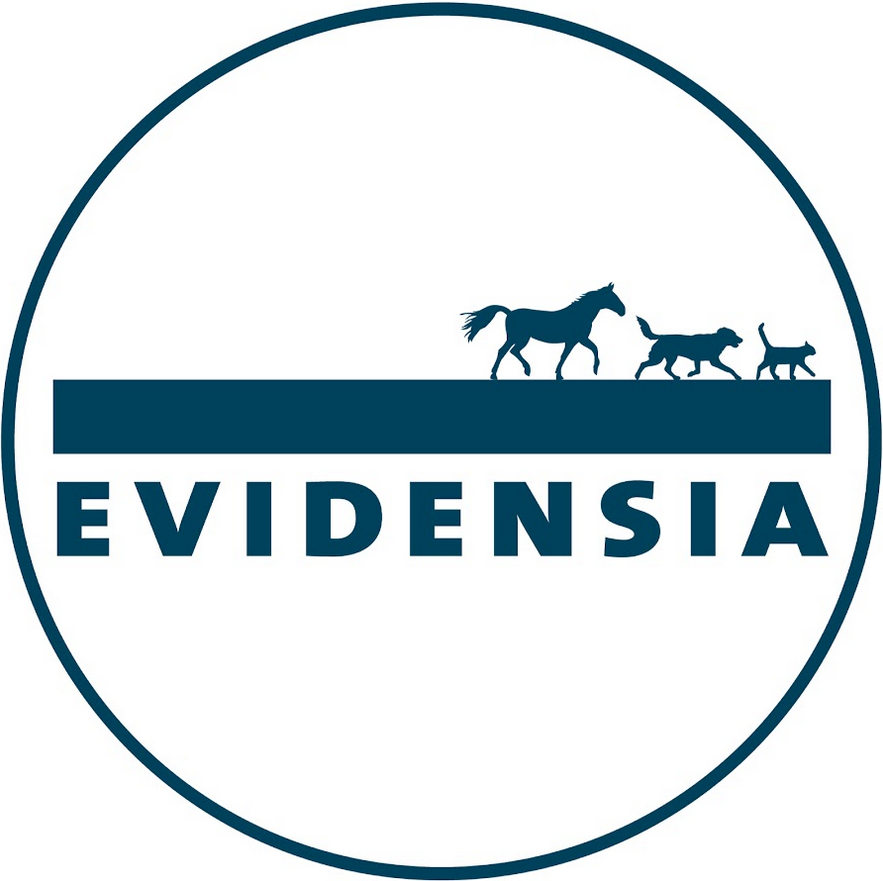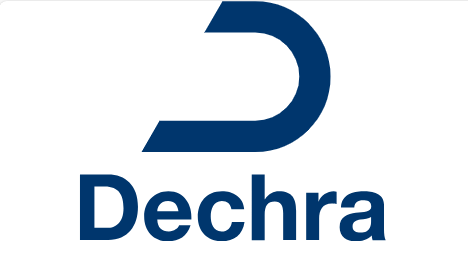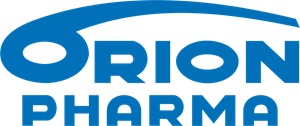Combination therapy
No results were found for your selected species
Flimabend
Active substance
ATC code
Species
Pigs (piglets, pigs for fattening, pregnant and lactating sows) and chickens (layer hens, chickens for reproduction, pullets, broilers).
Indications
In hens/chickens:
- Treatment of helminthiasis caused by Ascaridia galli (adult stages), Heterakis gallinarum (adult stages), Capillaria spp. (adult stages).
In pigs:
- Treatment of helminthiasis caused by Ascaris suum (adult and intestinal larval stages) in piglets, pigs for fattening, pregnant and lactating sows.
Dose to be administered and administration route
Oral use.
Hens/chickens:
1.43 mg flubendazole (= 14.3 mg veterinary medicinal product) per kg body weight daily during 7 days i.e. 1 g of the veterinary medicinal product per 70 kg body weight daily for 7 days.
Pigs:
a) Treatment of helminthiasis caused by Ascaris suum (adult stages and intestinal larval stages):
1 mg flubendazole (= 10 mg veterinary medicinal product) per kg body weight daily during 5 days, i.e. 1 g of the veterinary medicinal product per 100 kg body weight daily for 5 days;
b) Treatment of helminthiasis caused by Ascaris suum (adult stages):
2.5 mg flubendazole (= 25 mg veterinary medicinal product) per kg body weight daily during 2 days, i.e. 2.5 g of the veterinary medicinal product per 100 kg body weight daily for 2 days.
Pigs should be grouped according to their bodyweight and dosed accordingly, in order to prevent under or overdosing.
Based on the recommended dose and the number and weight of animals to be treated, the exact daily concentration of the veterinary medicinal product should be calculated according to the following formula:
This will result in a concentration of flubendazole between 20 and 200 mg per litre.
Method of administration:
Administration in drinking water
1) The required quantity of the veterinary medicinal product is in function of the estimated body weight of the total group animals (see table below for guidance).
Hens/chickens, 7 days of treatment
|
Total weight of chickens |
Amount of medication to be used (g/ day) |
Total amount of medication used (g/ 7 days) |
|
1400 kg 3500 kg 7000 kg 52500 kg |
20 g 50 g 100 g 750 g |
7 x 20 g 7 x 50 g 7 x 100 g 7 x 750 g |
Pigs, 5 days of treatment
|
Total weight of pigs |
Amount of medication to be used (g/ day) |
Total amount of medication used (g/ 5 days) |
|
2000 kg 5000 kg 10000 kg 75000 kg |
20 g 50 g 100 g 750 g |
5 x 20 g 5 x 50 g 5 x 100 g 5 x 750 g |
Pigs, 2 days of treatment
|
Total weight of pigs |
Amount of medication to be used (g/ day) |
Total amount of medication used (g/ 2 days) |
|
800 kg 2000 kg 4000 kg 30000 kg |
20 g 50 g 100 g 750 g |
2 x 20 g 2 x 50 g 2 x 100 g 2 x 750 g |
2) Each day a predilution is prepared containing the daily required dose of the veterinary medicinal product admixed in 10 to 100 times its weight in water depending on the distribution system. For example: for 500 g of the veterinary medicinal product, add 5 litres to 50 litres of water.
3) If less than entire package (a sachet or a container) is required, the required dose should be measured by suitably calibrated weighing equipment.
4) If the entire sachet is used, squeeze it gently before use and then empty the contents into the predilution recipient.
5) Stir the predilution vigorously with a manual mixer (whisk) for 2 minutes to obtain a white milky homogenous mixture.
6) This predilution must be distributed via the general water supply system: Tanks: add the predilution to the quantity of water usually consumed by the animals over a period of up to 4 hours.
Dosing pumps: adjust the flow rate of the pump to distribute the predilution over a period of up to 4 hours.
In order to ensure administration of the correct dose, a substantial water flow must be present in the drinking water system. Administration of the veterinary medicinal product over a period of up to 4 hours on each treatment day, at times when water consumption is likely to be highest prevents precipitation of flubendazole in the water delivery system and allows washing out of the drinking water system within a 24 hour period after the period of drug administration is finished.
7) Prior to and after the period of treatment make sure the water distribution system is cleaned.
8) Make sure that all animals in the group receive enough drinking water with the veterinary medicinal product. Withhold drinking water for 2 hours before treatment to stimulate thirst.
9) The corresponding dose must always be distributed when the water consumption of the animals is highest.
Adverse reactions
Pigs:
None known.
Chickens:
|
Undetermined frequency (cannot be estimated from the available data): |
Development disorders of the feathers |
Reporting adverse events is important. It allows continuous safety monitoring of a veterinary medicinal product. Reports should be sent, preferably via a veterinarian, to either the marketing authorisation holder or its local representative or the national competent authority via the national reporting system. See the package leaflet for respective contact details.
Dispensing
POM-VPS - Prescription Only Medicine – Veterinarian, Pharmacist, SQPSUMMARY OF PRODUCT CHARACTERISTICS
1. NAME OF THE VETERINARY MEDICINAL PRODUCT
FLIMABEND 100 mg/g suspension for use in drinking water for chickens and pigs
2. QUALITATIVE AND QUANTITATIVE COMPOSITION
Each g contains:
Active substance:
Flubendazole 100 mg
Excipients:
Methyl parahydroxybenzoate (E218) 2.0 mg
Sodium benzoate (E211) 5.0 mg
Disodium edetate 0.1 mg
For the full list of excipients, see section 6.1.
3. PHARMACEUTICAL FORM
Suspension for use in drinking water. White to brownish white suspension.
4. CLINICAL PARTICULARS
4.1 Target species
Pigs (piglets, pigs for fattening, pregnant and lactating sows) and chickens (layer hens, chickens for reproduction, pullets, broilers).
4.2 Indications for use, specifying the target species
In hens/chickens:
- Treatment of helminthiasis caused by Ascaridia galli (adult stages), Heterakis gallinarum (adult stages), Capillaria spp. (adult stages).
In pigs:
- Treatment of helminthiasis caused by Ascaris suum (adult and intestinal larval stages) in piglets, fattening pigs, pregnant and lactating sows.
4.3 Contraindications
Do not use in cases of hypersensitivity to the active substance or to any of the excipients.
4.4 Special warnings for each target species
In chickens, optimal results can only be achieved if strict rules of hygiene are respected in the maintenance of the cages.
In both species:
Care should be taken to avoid the following practices because they increase the risk of development of resistance and could ultimately result in ineffective therapy:
• Too frequent and repeated use of anthelmintics from the same class, over an extended period of time.
• Underdosing, which may be due to underestimation of body weight, misadministration of the product, or lack of calibration of the dosing device (if any). Suspected clinical cases of resistance to anthelmintics should be further investigated using appropriate tests (e.g. Faecal Egg Count Reduction Test). Where the results of the test(s) strongly suggest resistance to a particular anthelmintic, an anthelmintic belonging to another pharmacological class and having a different mode of action should be used.
4.5 Special precautions for use Special precautions for use in animals
None.
Special precautions to be taken by the person administering the veterinary medicinal product to animals
Direct contact with product should be avoided. Wear protective gloves while using the product. Wash hands after use.
People with known hypersensitivity to flubendazole should avoid contact with the veterinary medicinal product. In the event of eye contact, rinse thoroughly with water. In case of appearance and persistence of conjunctival redness, seek medical advice and show the package leaflet to the physician.
4.6 Adverse reactions (frequency and seriousness)
No undesirable effects have been demonstrated with flubendazole after administration of the therapeutic dose in pigs.
In chickens, development disorders of the feathers cannot be fully excluded after the administration of flubendazole.
4.7 Use during pregnancy, lactation or lay
Laboratory studies in rabbits and rats have not produced any evidence of embryotoxicity, teratogenicity at therapeutic doses. High dosages gave equivocal results. In laboratory studies in rats, there were no effects on pups during lactation.
The safety of the product has been demonstrated in laying hens, pregnant and lactating sows. The product can be administered to these animals.
4.8 Interaction with other medicinal products and other forms of interaction
None known.
4.9 Amounts to be administered and administration route
Oral use.
Hens/chickens:
1.43 mg flubendazole (= 14.3 mg product) per kg body weight daily during 7 days
i.e. 1 g of the product per 70 kg body weight daily for 7 days.
Pigs:
a) Treatment of helminthiasis caused by Ascaris suum (adult stages and intestinal larval stages):
1 mg flubendazole (= 10 mg product) per kg body weight daily during 5 days, i.e. 1 g of the product per 100 kg body weight daily for 5 days;
b) Treatment of helminthiasis caused by Ascaris suum (adult stages):
2.5 mg flubendazole (= 25 mg product) per kg body weight daily during 2 days, i.e.
2.5 g of the product per 100 kg body weight daily for 2 days.
Pigs should be grouped according to their bodyweight and dosed accordingly, in order to prevent under or overdosing.
Calculate the dosage accurately with the following formula:
![]() …mg [product ] X Average bw (kg) of the
…mg [product ] X Average bw (kg) of the
|
.... |
per kg bw/day treated animals =mg [product]
average quantity of drinking water (litre/animal) per litre drinking water consumed in 4 h
This will result in a concentration of flubendazole between 20 and 200 mg per litre.
Method of administration:
Administration in drinking water
1) The required quantity of the product is in function of the estimated body weight of the total group animals (see table below for guidance).
Hens/chickens, 7 days of treatment
|
Total weight of chickens |
Amount of medication to be used (g/ day) |
Total amount of medication used (g/ 7 days) |
|
1400 kg 3500 kg 7000 kg 52500 kg |
20 g 50 g 100 g 750 g |
7 x 20 g 7 x 50 g 7 x 100 g 7 x 750 g |
Pigs, 5 days of treatment
|
Total weight of pigs |
Amount of medication to be used (g/ day) |
Total amount of medication used (g/ 5 days) |
|
2000 kg 5000 kg |
20 g 50 g |
5 x 20 g 5 x 50 g |
|
10000 kg 75000 kg |
100 g 750 g |
5 x 100 g 5 x 750 g |
Pigs, 2 days of treatment
|
Total weight of pigs |
Amount of medication to be used (g/ day) |
Total amount of medication used (g/ 2 days) |
|
800 kg 2000 kg 4000 kg 30000 kg |
20 g 50 g 100 g 750 g |
2 x 20 g 2 x 50 g 2 x 100 g 2 x 750 g |
2) Each day a predilution is prepared containing the daily required dose of the product admixed in 10 to 100 times its weight in water depending on the distribution system. For example: for 500 g of the product, add 5 litres to 50 litres of water.
3) If less than entire package (a sachet or a container) is required, the required dose should be measured by suitably calibrated weighing equipment.
4) If the entire sachet is used, squeeze it gently before use and then empty the contents into the predilution recipient.
5) Stir the predilution vigorously with a manual mixer (whisk) for 2 minutes to obtain a white milky homogenous mixture.
6) This predilution must be distributed via the general water supply system: Tanks: add the predilution to the quantity of water usually consumed by the animals over a period of up to 4 hours.
Dosing pumps: adjust the flow rate of the pump to distribute the predilution over a period of up to 4 hours.
In order to ensure administration of the correct dose, a substantial water flow must be present in the drinking water system. Administration of the product over a period of up to 4 hours on each treatment day, at times when water consumption is likely to be highest prevents precipitation of flubendazole in the water delivery system and allows washing out of the drinking water system within a 24 hour period after the period of drug administration is finished.
7) Prior to and after the period of treatment make sure the water distribution system is cleaned.
8) Make sure that all animals in the group receive enough drinking water with the product. Withhold drinking water for 2 hours before treatment to stimulate thirst.
9) The corresponding dose must always be distributed when the water consumption of the animals is highest.
4.10 Overdose (symptoms, emergency procedures, antidotes), if necessary Flubendazole has a low acute oral toxicity.
In hens, no undesirable effects have been observed after administration of up to 15 mg/kg b.w./day flubendazole.
In pigs, no adverse effects have been observed after administration of up to 50 mg/kg b.w./day flubendazole.
In situations where accidental overdose is suspected of having occurred, there is no antidote and treatment should be symptomatic.
4.11 Withdrawal period(s)
Meat and offal: chickens: 2 days pigs:
- dose 1 mg/kg body weight for 5 days: 3 days
- dose 2.5 mg/kg body weight for 2 days: 4 days Eggs: zero days.
5. PHARMACOLOGICAL PROPERTIES
Pharmacotherapeutic group: Anthelmintics. Benzimidazoles and related substances.
ATCvet code: QP52AC12
5.1 Pharmacodynamic properties
Flubendazole is a benzimidazole anthelmintic. It acts by binding to tubulin of the parasite, the dimeric subunit protein of the microtubules. It inhibits micro tubular assembly in absorptive cells: i.e. in intestinal cells of nematodes or the tegumental cells of cestodes. This is shown by disappearance of cytoplasmic microtubules, accumulation of secretory granules in the cytoplasm due to a block in their transport, leading to an impaired coating of the cellular membrane and a decreased digestion and absorption of nutrients. Irreversible lytic degeneration of the cells, due to the accumulation of secretory substances (hydrolytic and proteolytic enzymes) results in the death of the parasite. These changes are relatively fast and are primarily seen in those organelles directly involved in the secretory and absorptive functions of the cells. In contrast the changes are not seen in cells of the host. Another tubulin-related effect is the strong inhibition of egg hatch by inhibition of microtubule-depended processes in the developing worm egg (cell division).
5.2 Pharmacokinetic particulars
Flubendazole is poorly soluble in aqueous systems, such as the gastrointestinal tract, which results in a low distribution rate and a low absorption. This is reflected by the high faecal excretion of unchanged parent drug. The small fraction absorbed is extensively metabolised by first-pass metabolism in the liver, involving carbamate hydrolysis and ketone reduction. The biotransformation products are conjugated to glucuronides or sulphate conjugates and excreted with the bile and the urine. The excretion with urine is relatively low and consists almost exclusively of metabolites with only small amounts of unchanged compound. In pigs and chickens, the half-life of flubendazole and its metabolites in plasma is 12 hours to 2 days.
6. PHARMACEUTICAL PARTICULARS
6.1 List of excipients
Sodium benzoate (E211)
Methyl parahydroxybenzoate (E218)
Disodium edetate
Carmellose sodium
Xanthan gum
Citric acid monohydrate
Carbomers
Propylene glycol
Water, purified
6.2 Major incompatibilities
In the absence of compatibility studies, this veterinary medicinal product must not be mixed with other veterinary medicinal products
6.3 Shelf life
Shelf-life of the veterinary medicinal product as packaged for sale: 3 years.
Shelf life after first opening the container: 6 months.
Shelf life after first opening the sachet: Use immediately. Any suspension remaining in the sachet after first opening should be discarded. Shelf life after dilution according to directions: 24 hours.
6.4 Special precautions for storage
This veterinary medicinal product does not require any special storage conditions.
6.5 Nature and composition of immediate packaging
Cardboard box containing 2 sachets (sachet PE/PET/aluminium/PET) of 20 g suspension for use in drinking water.
Cardboard box containing 24 sachets (sachet PE/PET/aluminium/PET) of 20 g suspension for use in drinking water.
Cardboard box containing 2 sachets (sachet PE/PET/aluminium/PET) of 50 g suspension for use in drinking water.
Cardboard box containing 24 sachets (sachet PE/PET/aluminium/PET) of 50 g suspension for use in drinking water.
Cardboard box containing 1 sachet (sachet PE/PET/aluminium/PET) of 100 g suspension for use in drinking water.
Cardboard box containing 5 sachets (sachet PE/PET/aluminium/PET) of 100 g suspension for use in drinking water.
Cardboard box containing 25 sachets (sachet PE/PET/aluminium/PET) of 100 g suspension for use in drinking water.
Cardboard box containing 4 containers (PP) with a closure (LDPE) of 750 g suspension for use in drinking water.
Cardboard box containing 6 containers (PP) with a closure (LDPE) of 750 g suspension for use in drinking water.
Not all pack sizes may be marketed.
6.6 Special precautions for the disposal of unused veterinary medicinal product or waste materials derived from the use of such products
Any unused veterinary medicinal product or waste materials derived from such veterinary medicinal product should be disposed of in accordance with local requirements.
7. MARKETING AUTHORISATION HOLDER
KRKA, d.d., Novo mesto
Šmarješka cesta 6
8501 Novo mesto
Slovenia
8. MARKETING AUTHORISATION NUMBER
Vm 01656/4042
9. DATE OF FIRST AUTHORISATION
27 March 2013
10. DATE OF REVISION OF THE TEXT
November 2017
PROHIBITION OF SALE, SUPPLY AND/OR USE
Not applicable.
To be supplied only on veterinary prescription.
Administration by a veterinary surgeon or under their direct responsibility.
Approved: 10/11/2017
![]()

| Art. Nr. | |
|---|---|
| EAN | 3838989724146 |
 TRUSTED SOURCE
TRUSTED SOURCE








